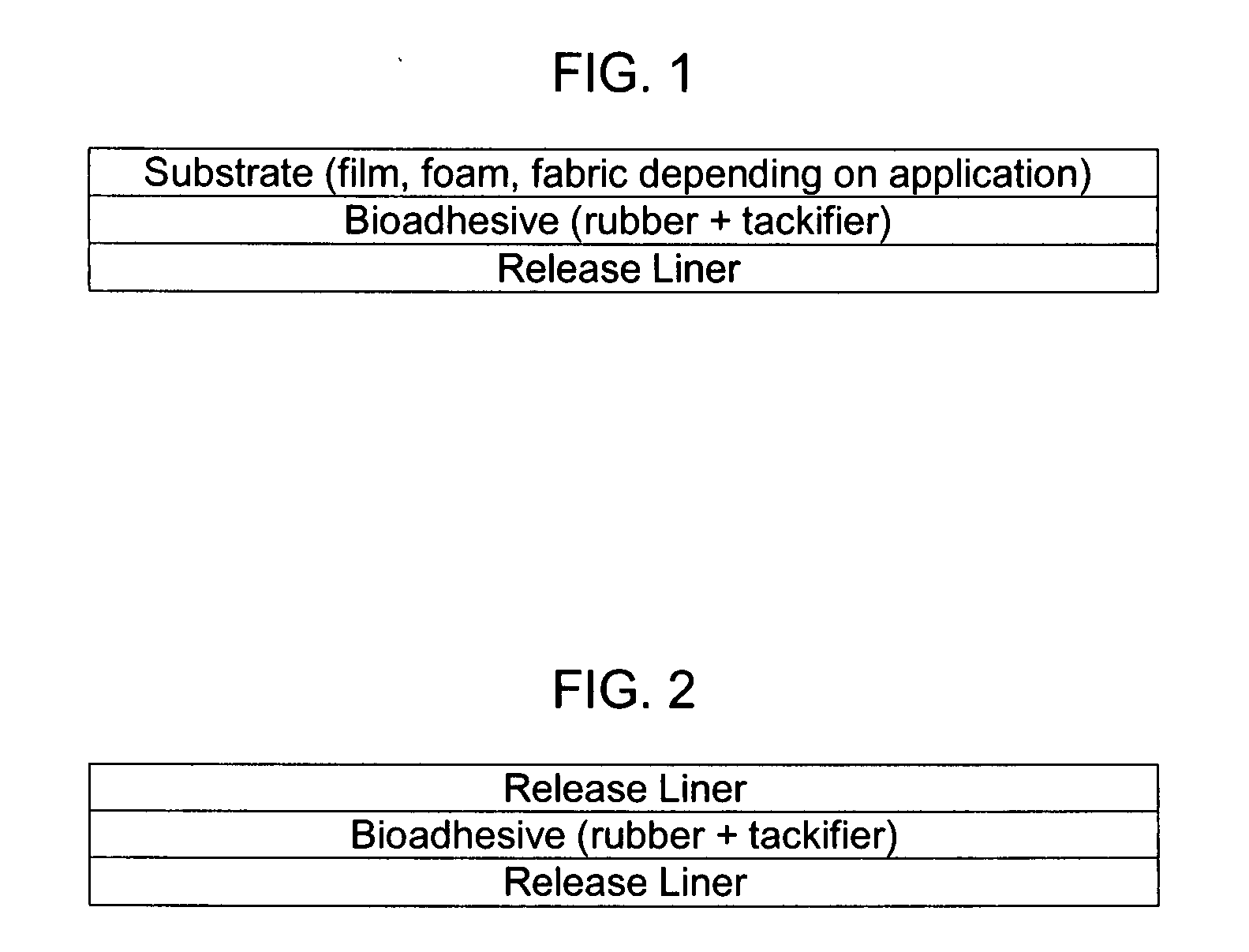Guayule rubber and resin wet-stick bioadhesives
a bioadhesive and guayule rubber technology, applied in the direction of adhesive types, dressings, bands, etc., can solve the problems of bioadhesives losing their pressure-sensitive tack, copolymer becoming highly hydrophilic, and dramatic loss of tack
- Summary
- Abstract
- Description
- Claims
- Application Information
AI Technical Summary
Problems solved by technology
Method used
Image
Examples
example 1
Extraction
[0040]Residual guayule bagasse after water extraction of latex was simultaneously extracted with an acetone / pentane azeotrope as described by Schloman, Jr. The product of this example was a rubber-resin miscella, which after evaporation of solvent, contained about 60% rubber and 40% resin.
example 2
Separation
[0041]The product from Example 1 was poured into a large excess of acetone to precipitate the rubber with stirring; rubber and resin were recovered after evaporation of the solvent. Extraction with refluxing acetone using the Soxhlet procedure indicated that the rubber contained 1.6% either polyterpenes or guayule resin. It is important to note that the latter contains low molecular weight rubber or polyterpenes; rubber is itself a polyterpene.
example 3
Preparation of Adhesives
[0042]Coagulated latex was guillotined and stirred in 1:1 mixture of xylene and tetrahydrofuran at room temperature to extract soluble rubber. After removal of the insoluble materials, the rubber was isolated. Cements were prepared by adding 25 parts of rubber to 75 parts toluene in a glass container. After the mixture was magnetically stirred at room temperature for 8 hours, a miscible solution free of insoluble material was formed and used to prepare the compositions in Examples 4-14 listed in Table 3.
TABLE 3Preparation of BioadhesivesExampleDryWet#RubberResinPoly (α-pinene)Poly (β-pinene)AdhesionAdhesion41000100059461000689111005078515100100880201001009772310010010732710010011850151001001285015100100137001515100100147015015100100
PUM
| Property | Measurement | Unit |
|---|---|---|
| dry adhesion | aaaaa | aaaaa |
| adhesion | aaaaa | aaaaa |
| pressure- | aaaaa | aaaaa |
Abstract
Description
Claims
Application Information
 Login to View More
Login to View More - R&D
- Intellectual Property
- Life Sciences
- Materials
- Tech Scout
- Unparalleled Data Quality
- Higher Quality Content
- 60% Fewer Hallucinations
Browse by: Latest US Patents, China's latest patents, Technical Efficacy Thesaurus, Application Domain, Technology Topic, Popular Technical Reports.
© 2025 PatSnap. All rights reserved.Legal|Privacy policy|Modern Slavery Act Transparency Statement|Sitemap|About US| Contact US: help@patsnap.com


